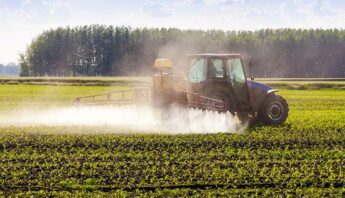The surprise appearance of Monsanto’s unapproved GE wheat in an Oregon field last month dominated the “bad GE news” cycle of the day, stoking worries among farmers, millers, bakers and eaters about the extent of the contamination.
Public outcry and demands to end open-air field testing of experimental GE crops are growing louder. And the discovery of rogue GE wheat in Oregon has driven key trading partners — like Japan and Korea — to suspend some wheat imports. All this exploded just days after millions of people around the world marched against Monsanto, denouncing its control, corruption and contamination of our food systems.
GE wheat in the loose is the latest in a series of warning signals that the systems we have put in place to ensure a vibrant and healthy food system are not working. We have had nearly two dozen other major incidents of noncompliance with the U.S. Department of Agriculture's notoriously lax rules on GE crops.
Contaminated food, fields & communities
Several years back Bayer's experimental GE rice contaminated our rice supply, eliciting import bans from Europe and Japan. And “Starlink corn,” a genetically engineered variety approved only for animal feed, somehow got into our tacos and corn chips.
Undeterred by the ongoing genetic contamination of our food and farms, USDA continues to allow some 1,000 field trials to test new GE crops each year, covering thousands of acres in multiple states. This little known, searchable USDA database reveals just how extensive and widespread these field trials are.
Genetic drift aside, these test plots are typically doused heavily with pesticides that can drift from the fields where they're applied, threatening the health of local communities and contaminating air, soil and water.
In Hawai’i — the global center of the Big 6 pesticide/GE corporations' open air field testing operations — a fierce battle is heating up, with Hawai’ian residents no longer willing to let the pesticide industry exploit their land and damage their health.
Who's in charge?
It’s not just our food and fields that have been contaminated. Our public agencies — those that bear the serious responsibility of protecting the public interest, our health and well-being — have been over-run by corporate influence. The revolving door between Big 6 industry representatives and USDA offices spins without pause, and millions of corporate lobby dollars flow directly into congressional campaign funds.
Recently, in a move that (on the surface) seemed to go against the grain of corporate control, USDA announced its intention to produce a full “environmental impact statement” (EIS) regarding Dow and Monsanto’s new and highly controversial 2,4-D and dicamba-resistant GE crops.
After receiving over 500,000 public comments last year — highlighting the dangers to farmers’ livelihoods and the health and well-being of rural communities — the agency acknowledged that its decision on these crops could have a significant effect on the “quality of the human environment.” Many, myself included, welcomed this news. For one thing, the EIS process is long enough that it will delay any possible commercialization of these crops into the 2015 season.
More importantly, the decision suggested that USDA might be preparing to pull its head from the corporate sands and began to look around at what is happening to our farmers and our rural landscape. Maybe that's what the agency will do with the EIS. After all, USDA says it's all about "helping rural America thrive" and "conserving the Nation's natural resources." But I’m worried.
Safeguard food & farming
Buried in the middle of the EIS notice, are signals from USDA that it has no intention of taking its own findings seriously. The agency warns that despite whatever the EIS might conclude regarding the GE seeds' broader impacts on rural communities, the agency has “[no] authority to address those impacts beyond what the Plant Protection Act requires.” And the latter simply requires USDA to determine whether or not a new GE seed might be a “plant pest” that could harm another crop or plant. A “yes/no” decision on "pest status" almost always enables the agency to approve the new GE seed, a decision the Big 6 corporations have come to expect.
It's time for USDA to take a long, hard and honest look at the full range of impacts of GE crops on our food and farming system. And then actually use this information to guide the agency’s decisions to safeguard our collective well-being. Gee, what a good idea.








